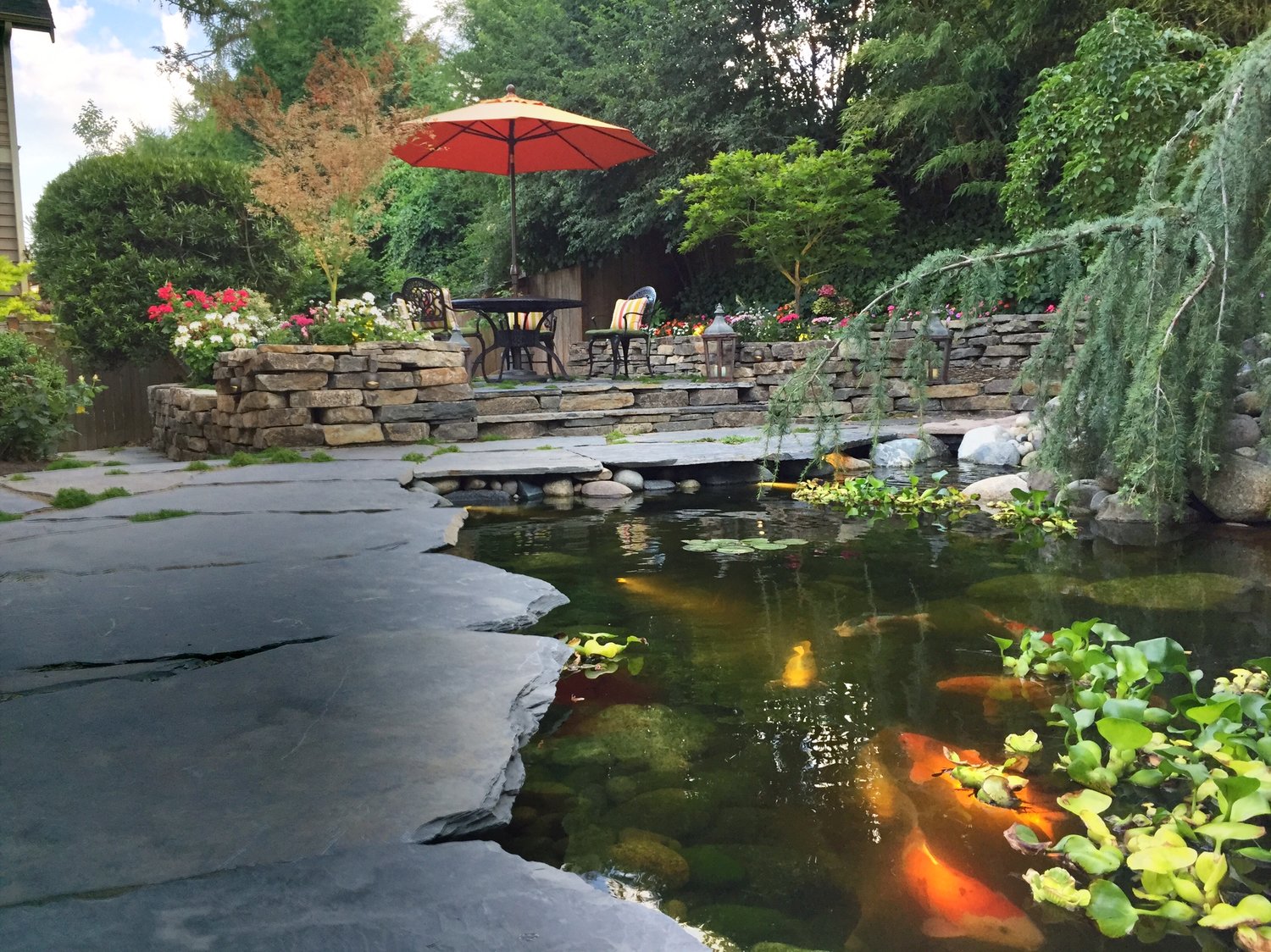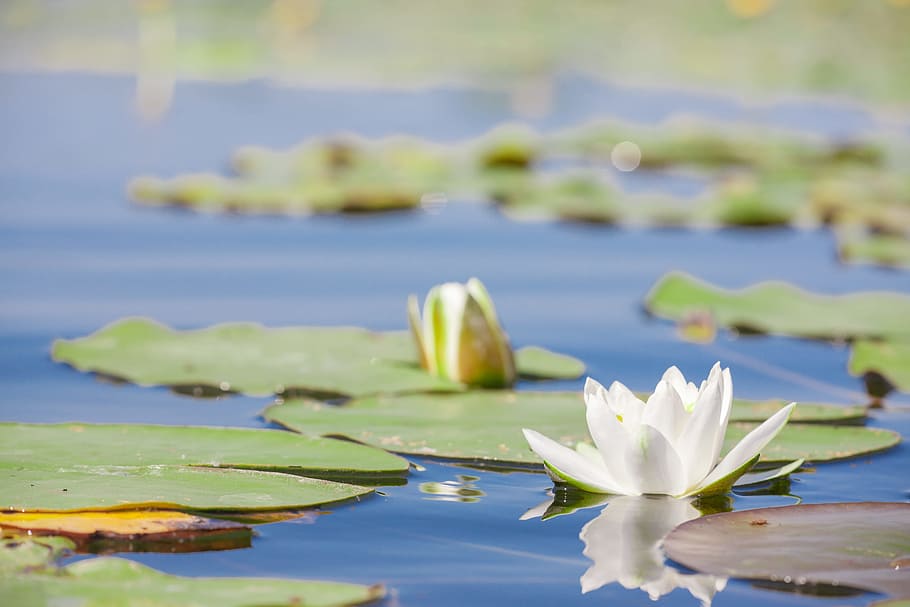The increased heat of summer weather increases the chances of adverse effects on ponds and lakes. Sunlight and air temperature contribute to rapidly increasing water temperature which negatively impacts a pond’s ecosystem. Thermal stratification causes warm water to rise which depletes oxygen from lower parts of the pond. Low amounts of oxygen in the pond puts the health of fish at risk and gives algae the opportunity to grow. Luckily there are many solutions to keeping a pond healthy during periods of rising temperature.
Here are a few tips you’ll want to follow to keep your pond water cool.

Plant around the pond
Get out your green thumb and ensure your pond plants and trees are providing shade to 30-50% of the pond surface. By keeping a good ratio of sun and shade, your water temperature will stay at a healthy level and your fish will have a place to cool off and hide from the summer rays.
Keep it circulating
One perk of having a waterfall or fountain is that circulation helps regulate water temperature. Make sure your pump is working at its best and always keep an eye on the water level. A healthy water level can help keep the cold water flowing.

Add features for shade
Rocks, water walkways, and other water features not only spruce up the look of your pond, but they also block your fish from the sun. These features provide shade and will protect your fish from predators.
Consider the depth
If you find that water in your pond won’t cool off it could be because the water level is not deep enough. A backyard koi pond should be at least two feet deep. Consider adding a deeper section or ask us to observe and help fix the situation. Deeper water gives your fish options to swim to the colder areas of the water to get away from the heat.
Avoid sudden temperature changes
It’s important to avoid sudden temperature changes in your pond, as it can affect your Koi’s digestive system. Once water temperature increases, a Koi’s digestive system is ready for additional food supply. Make sure to only add new, cold water in slow increments.

